
Alright, gearheads and potential SUV buyers, let’s talk about one of the most significant purchases many Americans make: a new SUV. We’re talking about an average of $47,000 in 2024 – that’s real money, folks, and nobody wants to throw that kind of cash down a bottomless pit of repair bills and buyer’s remorse. You see the glossy ads, you hear the marketing hype, but what often lurks beneath that shiny veneer are serious mechanical issues, fundamental design flaws, and reliability problems that can transform your dream ride into an absolute nightmare.
Here at the desk, we’ve gone deep, consulting with the heavy hitters like Car and Driver, CarEdge, and Consumer Reports, because when it comes to your hard-earned dollar, you deserve the unvarnished truth. We’re not here to sugarcoat things; we’re here to rip the band-aid off and expose the hidden problems of some common SUVs, especially those from Japanese brands that often promise bulletproof reliability but sometimes deliver a frustrating mess. From dodgy transmissions and electrical gremlins to rapid depreciation and questionable safety scores, we’re covering it all.
So, buckle up, because we’re about to take a critical, analytical, and frankly, a bit opinionated dive into some Japanese SUVs where the reality falls short of the expectation. We’re laying out the facts, the complaints, and the cold, hard reasons why some of these vehicles simply don’t deserve a spot in your garage. Our goal? To empower you with the knowledge to make an informed decision and avoid the models that are destined to become costly headaches. Let’s get to it.

1. **Nissan Armada’s Dated Powertrain and Interior**First up, let’s talk about the Nissan Armada. On paper, it presents itself as a capable full-size SUV, boasting a robust 400-horsepower V8 engine. Sounds impressive, right? Well, hold your horses, because that powertrain proves to be one of its major drawbacks. This isn’t some cutting-edge marvel; it’s dated engine technology, and in today’s world, that translates directly into one thing for your wallet: abysmal fuel economy.
Operating an Armada in an era of fluctuating gas prices becomes an increasingly expensive proposition. We’re talking about a significant bite out of your budget every time you visit the pump, making the cost of ownership escalate rapidly. It’s tough to justify a powerhouse that consistently guzzles fuel when more efficient large SUVs are readily available, showing that a big engine alone isn’t enough to carry the day anymore.
But the powertrain is just the beginning of the Armada’s struggles. Step inside, and while it might appear spacious at first glance, the interior suffers from poor space utilization and genuinely dated design elements. The infotainment system, in particular, feels decidedly antiquated when compared to its modern competitors, utterly lacking the intuitive interface and advanced features that have become standard expectations in this price range.
Furthermore, practical challenges abound. The high load floor creates unnecessary hurdles for cargo loading, making it a pain to haul anything substantial. And let’s not forget the cramped third-row seating, which severely limits its utility as a true eight-passenger vehicle. When a family-sized SUV can’t comfortably seat a family, you know there’s a problem with its fundamental design.
Combine these interior shortcomings with its already cumbersome size and notoriously poor maneuverability, and you’re left with a vehicle that struggles to justify its premium price point. For a significant investment, buyers expect competence, comfort, and contemporary features, none of which the Armada delivers in full. It’s a classic case of an SUV living in the past, and buyers deserve better for their money.
Car Model Information: 2011 Nissan Armada SV
Caption: 2023 Nissan Armada
Manufacturer: Nissan
Aka: Nissan Patrol
Production: 2003–present
ModelYears: 2004–present
Class: Full-size,sport utility vehicle
BodyStyle: SUV
Layout: Front-engine, rear-wheel-drive layout
Categories: 2010s cars, 2020s cars, All-wheel-drive vehicles, All Wikipedia articles written in American English, All articles with unsourced statements
Summary: The Nissan Armada (originally badged as the Nissan Pathfinder Armada) is a full-size SUV manufactured by Nissan for the North American market, since 2003 for the 2004 model year.
From 2003 to 2015, the first-generation Armada was assembled in Canton, Mississippi based on the Nissan Titan. From mid-2016 onwards, the second-generation Armada is built in Yukuhashi, Kyushu, Japan. It shares the same platform as the Nissan Patrol, with American-specific modifications, and went on sale in mid-2016 as a 2017 model. A luxury version of the Armada has been sold as the Infiniti QX80 (originally QX56).
Get more information about: Nissan Armada
Buying a high-performing used car >>>
Brand: Nissan Model: Armada
Price: $8,645 Mileage: 149,775 mi.
Read more about: 14 Enduring SUVs: The Ultimate Guide to Vehicles That Last Decades and Deliver Exceptional Value
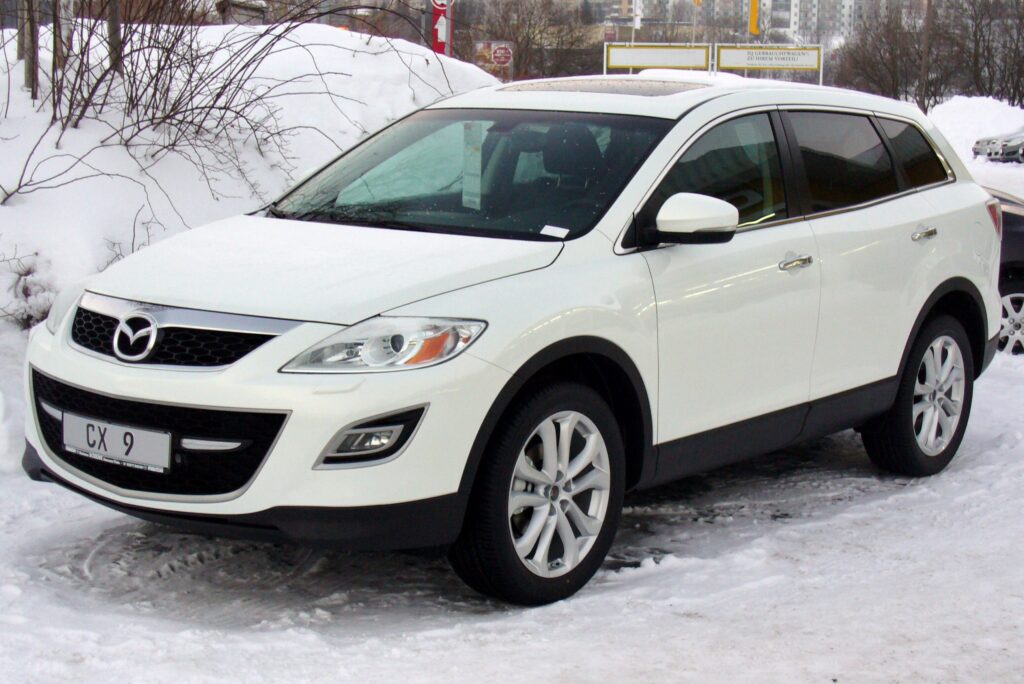
2. **Mazda CX-9’s Unpractical Design and Efficiency Woes**Next on our list is the Mazda CX-9, an SUV that often tries to punch above its weight class with what it calls “luxury aspirations.” But let’s be blunt: these aspirations are severely undermined by its practical limitations and nagging maintenance concerns. When you’re aiming for premium, you simply cannot afford to miss the mark on core functionality, and the CX-9, unfortunately, does just that.
For anyone considering a three-row SUV, the third row is, well, kind of important, wouldn’t you agree? In the CX-9, this critical feature is “particularly problematic – it’s nearly unusable for adults.” Seriously, what’s the point of calling it a three-row vehicle if a significant portion of the population can’t even sit back there comfortably? This isn’t a minor oversight; it’s a fundamental design flaw that cripples its utility for larger families or anyone needing genuine passenger capacity.
Beyond the cramped confines, the CX-9’s fuel efficiency is consistently disappointing. Real-world consumption frequently falls short of EPA estimates, adding another layer of frustration and expense for owners. These ongoing fuel costs, combined with the already limited cargo space behind that nearly unusable third row, make it a far less functional choice than many competitors. If you need plenty of storage capacity or routinely carry more than four people, this Mazda will leave you wanting.
Then there’s the question of long-term reliability and the associated expenses. While maintenance costs average $7,778 over ten years – which, to be fair, beats the industry average by $472 – that statistic comes with a significant caveat. There’s still a “nearly 22% chance of requiring a major repair during that period.” That’s not a comforting statistic for an SUV trying to sell itself on value and refined ownership. It’s a gamble, and a substantial one at that.
Ultimately, the Mazda CX-9’s ambition to blend luxury with practicality hits a wall when confronted with its real-world shortcomings. Its premium feel is undercut by basic design oversights and the specter of future repair bills. It’s an SUV that promises elegance but delivers compromised functionality, making it a tough recommendation for those who prioritize space, efficiency, and worry-free ownership.
Car Model Information: 2022 Mazda CX-9 Sport
Name: Mazda CX-9
Manufacturer: Mazda
Production: April 2006 – 2024
ModelYears: 2007–2023
Class: Mid-size crossover SUV
BodyStyle: SUV
Layout: unbulleted list
Successor: Mazda CX-90
Sp: us
Categories: 2010s cars, 2020s cars, All-wheel-drive vehicles, Articles with short description, CS1 Japanese-language sources (ja)
Summary: The Mazda CX-9 is a mid-size crossover SUV manufactured by Mazda in Japan since 2006 through two generations with three-row seating, it was Mazda’s largest passenger vehicle until the arrival of the CX-90.
Despite being built in Japan at Mazda’s Ujina #1 plant in Hiroshima Prefecture, the CX-9 was never offered in the Japanese domestic market. The shorter and narrower Mazda CX-8 was offered in Japan instead. Production was ended in 2024, with the Mazda CX-90 serving as its successor.
Get more information about: Mazda CX-9
Buying a high-performing used car >>>
Brand: Mazda Model: CX-9
Price: $22,127 Mileage: 72,495 mi.
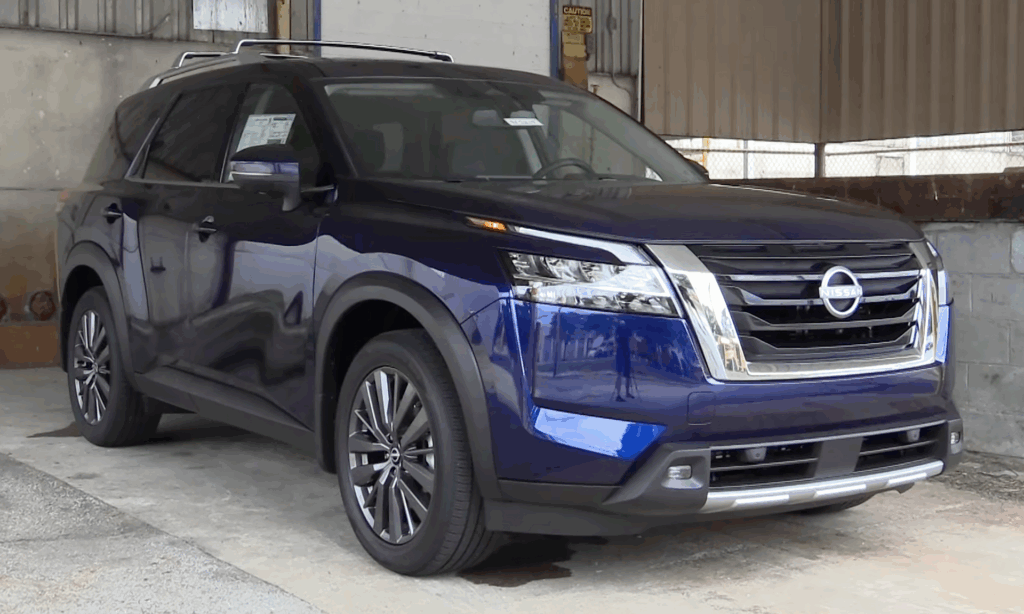
3. **Nissan Pathfinder’s Chronic Reliability Issues**Ah, the Nissan Pathfinder. A name that, for many years, evoked images of rugged exploration. However, recent generations have, shall we say, taken a detour into a minefield of reliability problems. This SUV has been “plagued by numerous reliability issues across multiple generations,” and it’s a track record that should give any potential buyer serious pause. We’re talking about a litany of headaches that go beyond minor annoyances.
Let’s start with the big one: transmission failures. This isn’t just a sporadic issue; it’s a common complaint that has haunted the Pathfinder. A failing transmission isn’t just inconvenient; it’s financially devastating, with repairs “averaging between $4,000-$4,600.” That’s not pocket change; that’s a substantial chunk of your life savings being poured into keeping your vehicle on the road. Combine that with engine stalling and navigation system malfunctions, and you have a recipe for frustration and potential safety hazards.
The problems aren’t limited to recent models, either. The 2013-2016 Pathfinders, in particular, suffered from a critical flaw: “premature wear on timing chain guides.” This issue would manifest as alarming rattling and tapping noises emanating from the engine, a sound no car owner ever wants to hear. It speaks to a fundamental engineering oversight that led to costly and preventable engine damage, highlighting a pattern of mechanical vulnerability.
Even more recent models haven’t entirely escaped the reliability curse. They continue to face challenges with fuel system issues, including reports of faulty fuel pumps and failures of the automatic start/stop system. These aren’t just minor glitches; they can impact the vehicle’s drivability and efficiency, adding to the ongoing saga of Pathfinder woes. When basic systems are struggling, confidence in the entire package erodes quickly.
To add insult to injury, the Pathfinder’s interior often “feels less refined compared to competitors,” making its premium price point even harder to swallow. And let’s not forget the “mediocre fuel efficiency,” which certainly doesn’t help justify its value. With its “poor build quality and reliability ratings,” the Pathfinder stands out as a “questionable choice, especially with how competitive the midsize SUV market is.” In fact, another analysis even goes so far as to claim it as “the worst SUV in the segment.” That, my friends, is a verdict that’s hard to ignore.
Car Model Information: 2023 Nissan Pathfinder Platinum
Name: Nissan Pathfinder
Caption: 2022 Nissan Pathfinder Platinum 4WD (R53, US)
Manufacturer: Nissan
Production: 1985–present
ModelYears: unbulleted list
Layout: unbulleted list
Class: unbulleted list
Chassis: unbulleted list
Predecessor: unbulleted list
Successor: unbulleted list
Categories: 1990s cars, 2000s cars, 2010s cars, 2020s cars, All-wheel-drive vehicles
Summary: The Nissan Pathfinder is a range of sport utility vehicles manufactured by Nissan since 1985. Until the third-generation model, the Pathfinder is based on Nissan’s compact pickup truck platform which it shares with the Navara/Frontier.
The Pathfinder was marketed as the Nissan Terrano (Japanese: 日産・テラノ, Hepburn: Nissan Terano) outside North America. Beginning in 2004, the vehicles were marketed globally as the Pathfinder.
In 2012, the R52 series Pathfinder was released as a three-row crossover SUV based on the unibody Nissan D platform, moving away from the body-on-frame chassis format. The role of a mid-size body-on-frame SUV in Nissan’s global lineup was passed to the Terra/X-Terra, which was released in 2018 and based on the D23 series Navara.
Get more information about: Nissan Pathfinder
Buying a high-performing used car >>>
Brand: Nissan Model: Pathfinder
Price: $37,377 Mileage: 46,270 mi.
Read more about: Buyer Beware: 8 SUVs That Are Known to Fail Frequently Before 100,000 Miles
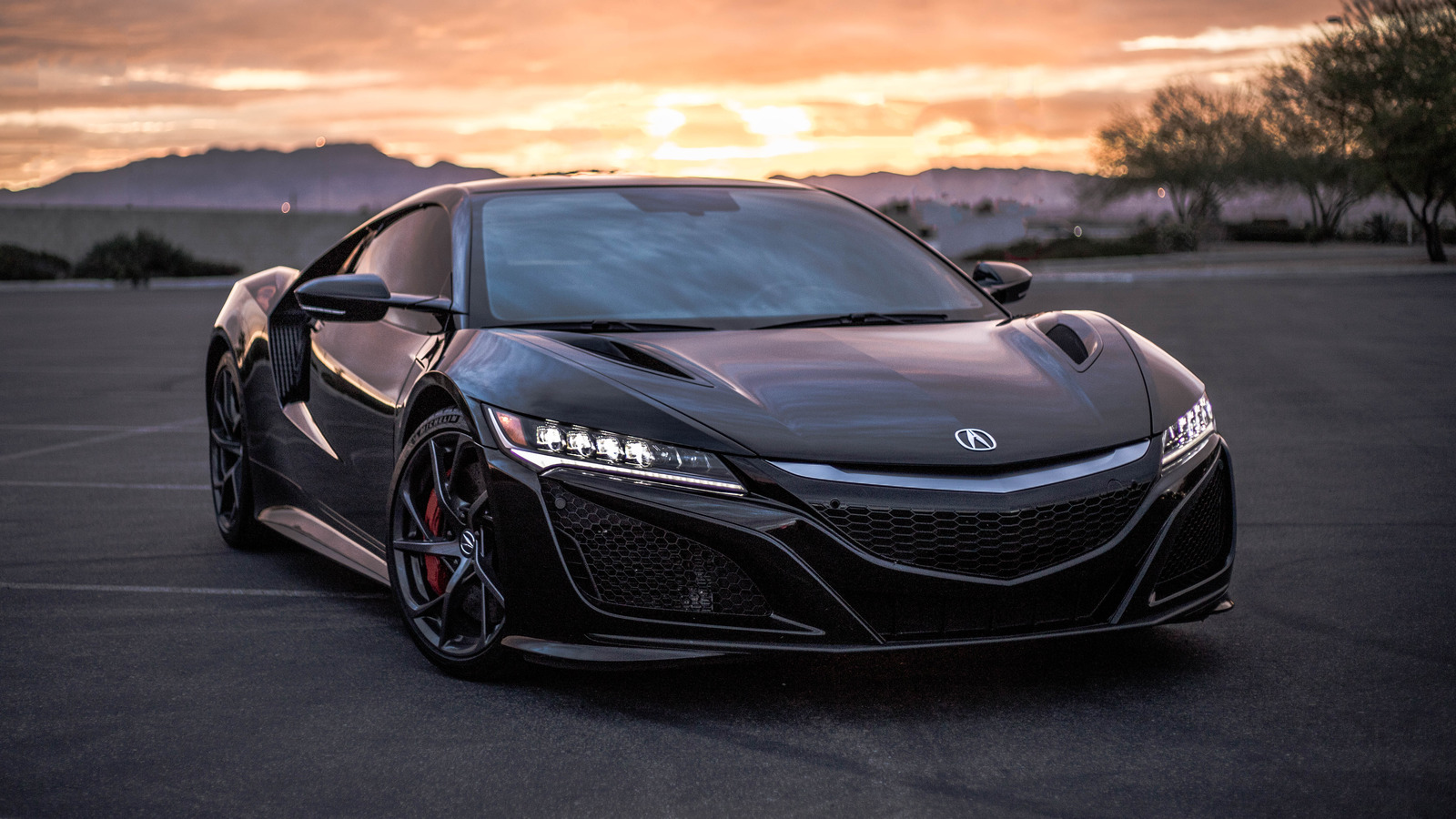
4. **Acura MDX’s Underwhelming Performance**When you buy an Acura, you’re not just buying a car; you’re buying into the Honda luxury experience, a promise of refinement, sophistication, and a certain level of spirited performance. The Acura MDX, on the surface, seems to embody much of that. It’s known for its “comfortable cabin and responsive steering,” which are certainly positive attributes. But here’s the kicker, and it’s a big one for a luxury SUV: it “sadly lacks the power punch expected from a luxury SUV.”
Let’s be clear: luxury isn’t just about plush leather and quiet rides; it’s also about effortless power and exhilarating performance when you need it. The MDX, unfortunately, delivers a “sluggish engine and underwhelming performance.” In a segment where rivals are boasting potent powertrains and dynamic driving experiences, the MDX feels perpetually a step behind, struggling to keep pace. This isn’t just about winning drag races; it’s about the feeling of confidence and capability that a luxury vehicle should inspire.
This lack of verve means the MDX “doesn’t deliver the excitement or quality the badge demands.” When you’re shelling out luxury money, you’re not just paying for a badge; you’re paying for a holistic experience that includes a compelling drive. The MDX’s inability to provide that “power punch” is a significant disappointment, transforming what should be a thrilling drive into a merely adequate one. It simply doesn’t live up to the promise of the Acura nameplate.
For discerning buyers in the luxury SUV market, this performance deficit is more than a minor quibble; it’s a fundamental flaw in its proposition. If you’re seeking that blend of comfort, style, and genuine driving excitement that a luxury SUV should offer, the MDX’s “underwhelming performance” is a clear signal. The recommendation from the experts is unequivocal: buyers should “consider this an indicator to shop elsewhere for better alternatives.” It’s a polite way of saying: move along, there’s nothing truly thrilling to see here.”
Car Model Information: 2022 Acura MDX Technology Package
Name: Acura MDX
Manufacturer: Honda
Production: 2000–present
ModelYears: unbulleted list
Class: Executive car,crossover SUV
BodyStyle: SUV
Predecessor: Acura SLX
Caption: 2022 Acura MDX Technology (US)
Categories: 2010s cars, 2020s cars, Acura vehicles, All-wheel-drive vehicles, All Wikipedia articles written in American English
Summary: The Acura MDX is a mid-size luxury crossover SUV with three-row seating produced by the Japanese automaker Honda under its luxury Acura division since 2000. The alphanumeric moniker stands for “Multi-Dimensional” luxury. It has ranked as the second-best selling mid-size luxury SUV after the Lexus RX in the U.S.
The MDX was introduced on October 5, 2000 as a 2001 model, replacing the slow-selling U.S.-only body-on-frame SLX, based on the Isuzu Trooper. In Japan, it was made to replace the Honda Horizon (also based on the Trooper) which was discontinued in 1999. In 2003, the vehicle went on sale in Japan and Australia as the Honda MDX; sales with Honda badges ended with the introduction of the second generation three years later.
Get more information about: Acura MDX
Buying a high-performing used car >>>
Brand: Acura Model: MDX
Price: $37,929 Mileage: 45,037 mi.

5. **Nissan Rogue’s Problematic CVT and Tech Glitches**Steering away from the luxury SUVs for a moment, let’s talk about the Nissan Rogue. This compact SUV, a common sight on many roads, has unfortunately carved out a critical spot for itself due to some deeply concerning flaws. When considering a vehicle for daily commutes, reliability should be paramount, but the Rogue, particularly certain model years, has struggled to deliver on that fundamental promise. It’s a classic case of an everyday vehicle becoming an everyday headache.
At the heart of many complaints and a significant design misstep is the Rogue’s continuously variable transmission (CVT). In the video, “The 5 Best and 5 Worst SUVs You’ll REGRET Buying,” the Nissan Rogue held a critical spot with its “poorly rated CVT transmission, which many drivers find noisy and unreliable.” This isn’t just an audible annoyance of a droning engine note; it translates into a driving experience that often feels sluggish, unresponsive, and disconnected from the road. The constant drone and lack of natural gear shifts can make even simple acceleration feel like a perpetual struggle.
The unreliability of this CVT isn’t merely a comfort issue; it poses a substantial financial risk. Frequent breakdowns and costly repairs associated with these transmissions have been a recurring nightmare for many Rogue owners. Such a critical component’s failure fundamentally undermines the vehicle’s integrity and dramatically increases the total cost of ownership over its lifespan.
Beyond the powertrain woes, the Rogue also contends with a track record of build quality concerns and glitchy technology. These aren’t minor hiccups; electronic issues can plague everything from the infotainment system to essential onboard features. Connectivity problems, unresponsive touchscreens, and malfunctioning driver-assist systems diminish the perceived value and utility of the vehicle. For buyers seeking peace of mind, the Rogue’s track record of problematic transmissions and unreliable tech presents a significant red flag that’s hard to ignore.
Car Model Information: 2021 Nissan Rogue SL
Name: Nissan Rogue
Caption: 2023 Nissan Rogue SV (US)
Manufacturer: Nissan
Aka: Nissan X-Trail
Production: 2007–present
ModelYears: 2008–present
Class: Compact crossover SUV
BodyStyle: SUV
Layout: Front-engine, front-wheel-drive layout
Predecessor: Unbulleted list
Categories: 2010s cars, All-wheel-drive vehicles, All articles lacking reliable references, Articles lacking reliable references from November 2017, Articles with short description
Summary: The Nissan Rogue is a compact crossover SUV produced by the Japanese automobile manufacturer Nissan. It made its debut in October 2007 for the 2008 model year. Beginning in 2013 for the 2014 model year, the model has been merged with the X-Trail sold outside the North American market, making them identical.
As of 2023, the Rogue was manufactured at the Nissan Smyrna Assembly Plant in Tennessee, United States and at the Nissan Motor Kyushu plant in Kanda, Fukuoka, Japan. Between August 2014 and March 2020, it was also built at the Renault Samsung Motors plant in Busan, South Korea under contract.
Get more information about: Nissan Rogue
Buying a high-performing used car >>>
Brand: Nissan Model: Rogue
Price: $20,699 Mileage: 60,669 mi.
Read more about: Buyer Beware: 12 Cars That Will Cost You a Fortune Before You Hit 50,000 Miles
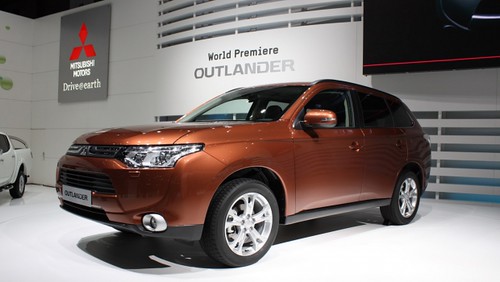
6. **Mitsubishi Outlander’s Deceptive Design and Underwhelming Power**Next, we turn our critical eye to the Mitsubishi Outlander, an SUV that often attempts to lure buyers with its exterior allure. As seasoned automotive enthusiasts know, a pretty face can sometimes mask undesirable characteristics. The Outlander is a prime example of a vehicle where the shiny facade belies significant functional disappointments and design compromises impacting daily driving.
One of the more frustrating issues owners frequently encounter revolves around brake wear, which has been reported as a recurring problem. While not always headline-grabbing, brake problems quickly become a costly and persistent maintenance headache. Rapid or uneven brake wear signals an underlying design or material issue, translating directly into more frequent and expensive trips to the service center for owners, adding unforeseen expenses.
Compounding the maintenance woes is the Outlander’s often underwhelming power delivery. The video highlights that “problems with brake wear and underwhelming power leave drivers frustrated and disappointed.” This isn’t about being a drag-strip king; it’s about having sufficient, responsive power for everyday driving situations like merging onto highways or safely overtaking. When an SUV feels constantly strained, the driving experience quickly becomes a chore rather than a pleasure, particularly when fully loaded.
Then there’s the crucial question of value, particularly regarding the price tag. The context states, “At over $30,000, it’s hard to justify the price tag when reliability is questionable.” For that investment, buyers rightly expect a vehicle that performs admirably and holds up over time, free from consistent mechanical or design flaws. The Outlander’s shortcomings in performance and potential for recurring brake issues make its proposition a difficult one to swallow for the financially savvy buyer.
Car Model Information: 2024 Mitsubishi Outlander ES
Name: Mitsubishi Outlander
Caption: 2022 Mitsubishi Outlander SE
Manufacturer: Mitsubishi Motors
Aka: ubl
Production: 2001–present
Class: Compact crossover SUV
BodyStyle: Sport utility vehicle
Layout: ubl
Categories: 2010s cars, 2020s cars, All-wheel-drive vehicles, All articles containing potentially dated statements, All articles with dead external links
Summary: The Mitsubishi Outlander (Japanese: 三菱・アウトランダー, Hepburn: Mitsubishi Autorandā) is a compact crossover SUV manufactured by Japanese automaker Mitsubishi Motors since 2001. It was originally known as the Mitsubishi Airtrek (Japanese: 三菱・エアトレック, Hepburn: Mitsubishi Eatorekku) when it was introduced in Japan.
The original Airtrek name was chosen to “describe the vehicle’s ability to transport its passengers on adventure-packed journeys in a ‘free-as-a-bird’ manner”, and was “coined from Air and Trek to express the idea of footloose, adventure-filled motoring pleasure.” The Outlander nameplate which replaced it evoked a “feeling of journeying to distant, unexplored lands in search of adventure.”
The second generation of the vehicle was introduced in 2006 and all markets including Japan adopted the Outlander name, although production of the older version continued in parallel. It was built on the company’s GS platform, and used various engines developed by Mitsubishi, Volkswagen, and PSA Peugeot Citroën. PSA’s Citroën C-Crosser and Peugeot 4007, which were manufactured by Mitsubishi in Japan, are badge engineered versions of the second generation Outlander. Global sales achieved the 1.5 million unit milestone in October 2016, 15 years after its market launch.
As part of the third generation line-up, Mitsubishi launched in January 2013 a plug-in hybrid model called Outlander PHEV. As of January 2022, global sales totaled about 300,000 units.
The fourth-generation model was released in 2021 as a 2022 model. Following Mitsubishi’s entry to Renault–Nissan–Mitsubishi Alliance, the fourth-generation Outlander is based on the Rogue/X-Trail, which is built on the CMF-CD platform.
Get more information about: Mitsubishi Outlander
Buying a high-performing used car >>>
Brand: Mitsubishi Model: Outlander
Price: $20,777 Mileage: 58,662 mi.
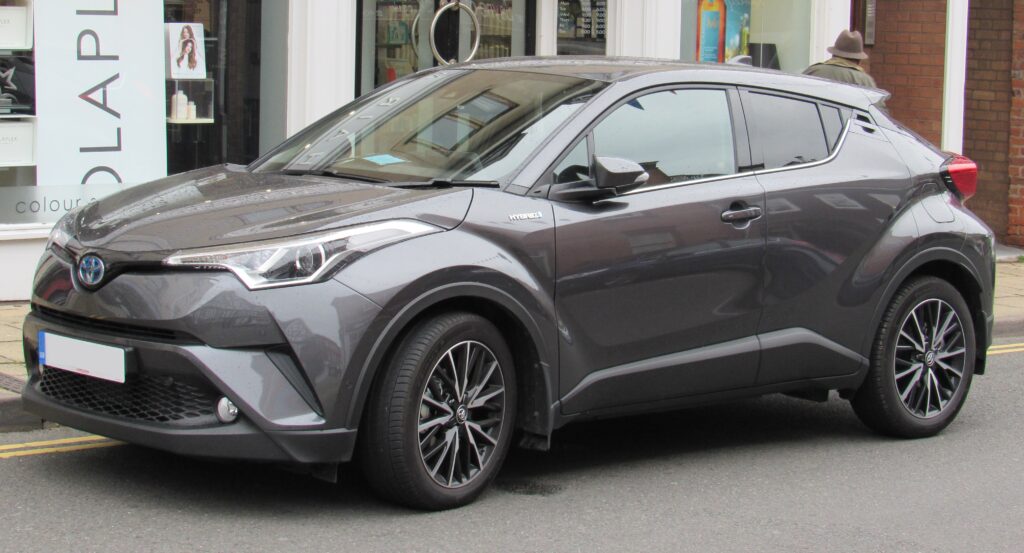
7. **Toyota CH-R’s Visibility and Sluggish Acceleration Issues**Now, let’s cast our gaze upon the Toyota CH-R, an SUV that undeniably turns heads with its distinctive, flashy appearance. Toyota generally holds a strong reputation for reliability, but even the best brands can occasionally miss the mark on fundamental design. The CH-R serves as a stark reminder that bold styling can come at the expense of crucial practicality and, more importantly, a safe and enjoyable driving experience.
A significant concern for CH-R owners, and a critical design flaw, is its pronounced visibility issues. The vehicle’s aggressively sloped roofline, thick rear pillars, and small rear windows, while visually striking, collectively create considerable blind spots and severely constricted rearward views. This isn’t a minor inconvenience; compromised visibility directly impacts safety and driver confidence, making maneuvers like lane changes, reversing, or parking far more challenging than they need to be.
Furthermore, the CH-R is notoriously plagued by painfully slow acceleration times. The video explicitly mentions this flaw, indicating that “with visibility issues and a painfully slow acceleration time, it’s evident that beauty does not equate to functionality.” In modern traffic, having adequate power to merge onto busy highways or quickly respond to changing conditions is not a luxury, but a necessity for both safety and composure. The CH-R often leaves drivers wanting, feeling underpowered and vulnerable in these critical scenarios.
Ultimately, the Toyota CH-R exemplifies a design philosophy where aesthetics trump practicality and safety. While its unique look might appeal to some, the fundamental driving experience is severely undermined by these significant design flaws. For those who prioritize confident driving, clear sightlines, and responsive performance over purely aesthetic appeal, the CH-R’s beauty simply doesn’t compensate for its functional drawbacks, making it a potentially regrettable purchase.
Car Model Information: 2007 Toyota Tundra SR5 CrewMax
Name: Toyota C-HR
Caption: Toyota C-HR 1.8 Hybrid (ZYX20, Europe)
Manufacturer: Toyota
Aka: FAW Toyota
Production: 2016–present
Class: Subcompact crossover SUV
BodyStyle: SUV
Platform: Toyota TNGA-C platform
Layout: unbulleted list
Categories: 2020s cars, ASEAN NCAP small off-road, All-wheel-drive vehicles, All Wikipedia articles written in British English, All articles with dead external links
Summary: The Toyota C-HR (Japanese: トヨタ C-HR, Hepburn: Toyota Shīeichiāru) is a subcompact crossover SUV manufactured and marketed by Japanese automaker Toyota since 2016. Since 2020, it is positioned between the Yaris Cross and Corolla Cross in Toyota’s crossover SUV range.
The first-generation C-HR was available in many regions, including Japan, China, North America, Europe, Southeast Asia, and Australasia, and was produced in four countries. Since the release of the second-generation C-HR in 2023, availability of the C-HR has been limited to Europe and Australia, with production centralised in Turkey. The Corolla Cross, released in 2020, has largely taken over the model’s positioning outside Europe.
Get more information about: Toyota C-HR
Buying a high-performing used car >>>
Brand: Toyota Model: CH-R
Price: $10,495 Mileage: 176,659 mi.
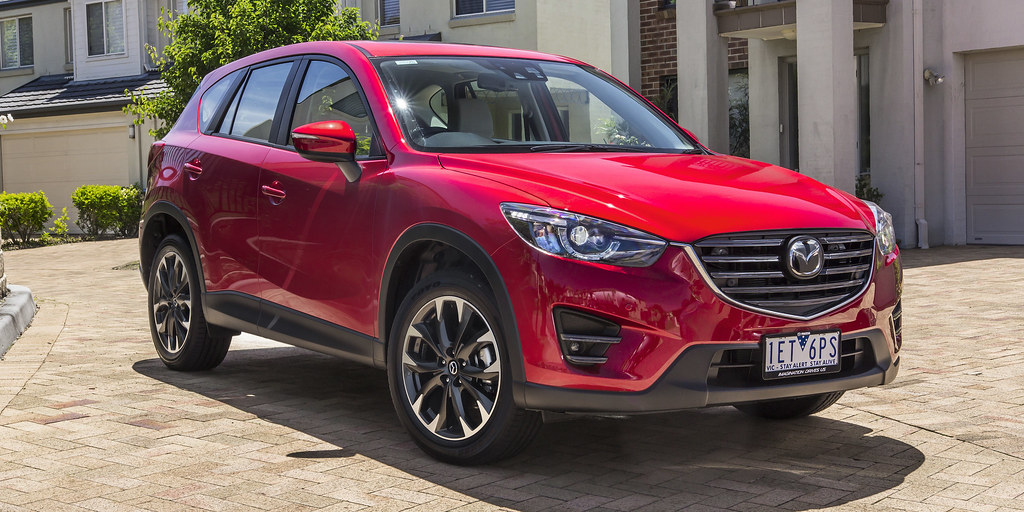
8. **Mazda CX-5’s Persistent Electrical and Windshield Woes**While Mazda’s CX-5 often receives praise for its engaging driving dynamics and upscale interior, no vehicle is entirely without its potential pitfalls. Certain model years, particularly within its first and second generations, reveal some deeply entrenched design and electrical shortcomings that seriously impact the ownership experience. This serves as a potent reminder that even a generally reliable brand can stumble on fundamental aspects.
One of the most annoying and persistent issues reported involves electrical features remaining active even after the engine has been shut off. Owners have shared experiences where “the driver could walk away from the car not realizing that the radio and other features are still on.” This oversight quickly transforms into a major headache, leading to completely drained batteries and frustrating starting issues, often attributed to a faulty ignition system. The problem of daytime running LED lights also persisted in first-gen models.
Adding to the list of frustrations are specific problems with the vehicle’s windshield. There have been numerous reports of “sensitive windshield glass,” prone to cracking for no apparent reason, with cracks expanding rapidly to require immediate replacement. Moreover, issues with the windshield defroster, especially prevalent in 2016 and later models, significantly reduced visibility during adverse weather, posing a safety concern.
Beyond these specific examples, the CX-5’s electrical systems have been a broader source of complaints, particularly for second-generation models. Owners have reported various “electrical issues,” including frustrating infotainment system errors, such as the radio inexplicably changing stations, and persistent dashboard light problems. Touch-screen system failures further diminish the user experience and the vehicle’s modern appeal. The 2014, 2015, 2016, 2018, and 2019 model years are particularly cited as problematic.
Car Model Information: 2016 Mazda CX-5 Grand Touring
Name: Mazda CX-5
Caption: Second generation CX-5 (KF; 2024)
Manufacturer: Mazda
Production: 2012–present
ModelYears: 2013–present
Class: Compact crossover SUV
BodyStyle: SUV
Layout: unbulleted list
Predecessor: unbulleted list
Categories: 2020s cars, All-wheel-drive vehicles, All articles containing potentially dated statements, All articles lacking reliable references, All articles with dead external links
Summary: The Mazda CX-5 is a compact crossover SUV, produced by Mazda since 2012. A successor to both the Tribute and the slightly larger CX-7, it is Mazda’s first model to feature the “Kodo” design language and the first model to be fully developed with a range of technologies branded as Skyactiv, including a rigid, lightweight platform combined with a series of engines and transmissions to reduce emissions and fuel consumption.
Since 2019, the CX-5 is positioned above the smaller CX-30. As of 2022, depending on the region, the CX-5 is positioned right below the larger CX-50, CX-60 or the CX-8 within Mazda’s crossover SUV line-up.
Since 2014, the CX-5 has consistently been Mazda’s best-selling model globally. It achieved record sales in 2019, with 444,262 units sold worldwide. As of March 2022, cumulative sales of the CX-5 reached around 3.5 million units.
Get more information about: Mazda CX-5
Buying a high-performing used car >>>
Brand: Mazda Model: CX-5
Price: $15,495 Mileage: 93,888 mi.
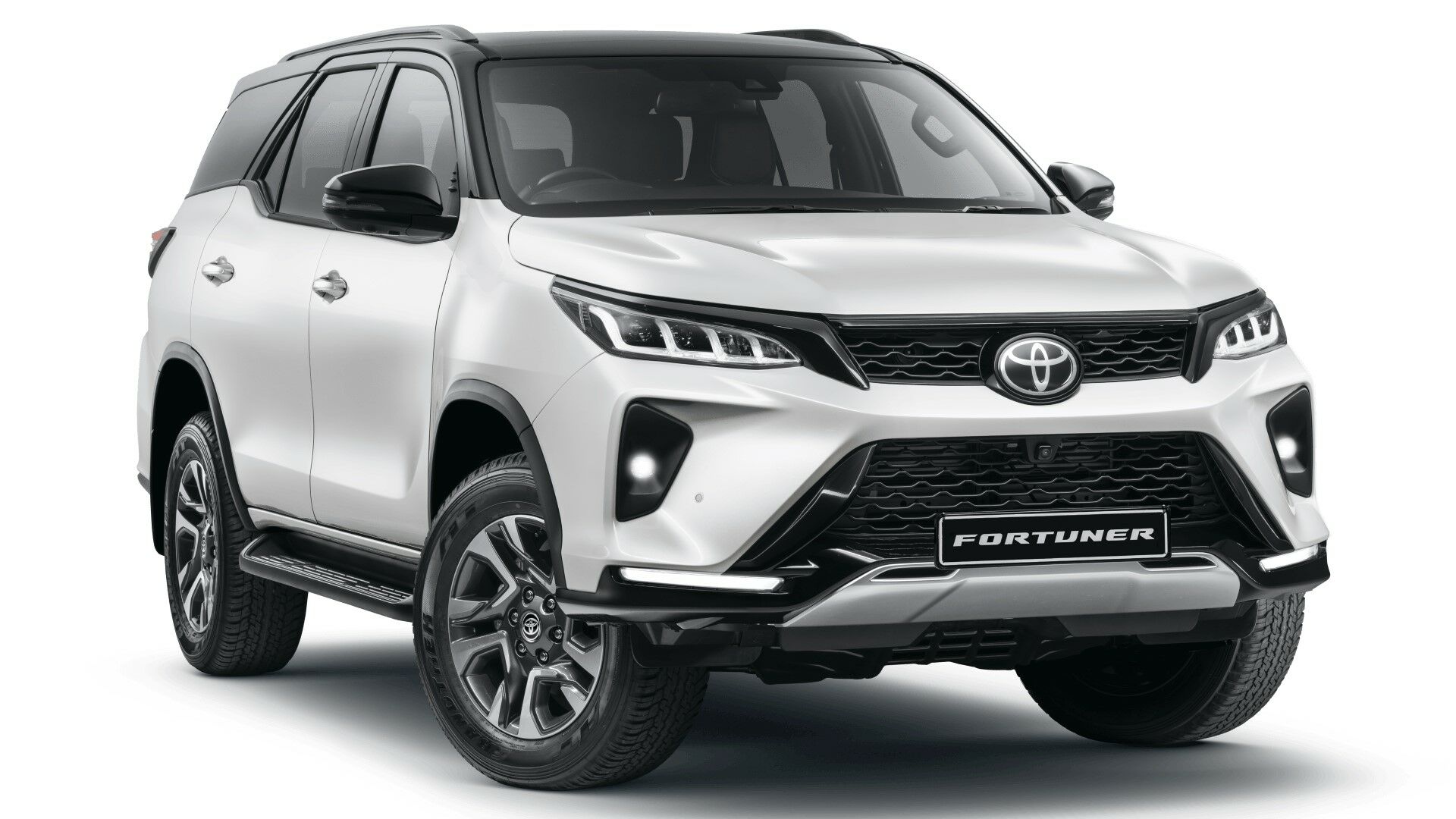
9. **Toyota RAV4’s Historic Reliability Downturns**The Toyota RAV4, especially its more recent iterations, is widely celebrated for its robust reliability and practical design, making it a perennial favorite among compact SUVs. However, it’s crucial to acknowledge that this glowing reputation hasn’t always been universal across all model years. Delving into its history reveals periods when the RAV4, surprisingly, struggled with significant reliability issues, a stark contrast to its current, highly praised standing.
Specifically, older RAV4 models, particularly those from “2013, 2008, and 2009,” received “really low-reliability scores.” For a brand synonymous with bulletproof dependability and long-term value, these low marks are a striking indicator of underlying problems during those production cycles. These weren’t isolated incidents but rather pervasive trends noted by reputable automotive data collectors, painting a picture of a less-than-stellar ownership experience.
While the context doesn’t detail every specific “design flaw” for these older RAV4s, low reliability scores often stem from pervasive mechanical or electrical shortcomings inherent in the vehicle’s design or manufacturing. Such issues could range from problematic transmissions to recurring engine faults or persistent electrical gremlins that manifest as frequent repair needs and costly maintenance. For owners, these years represented a clear departure from the expected Toyota standard, transforming their capable SUV into an unforeseen money pit.
The good news for contemporary buyers is that “the manufacturer seems to have ironed out most of the issues with older models and now it receives improved scores.” This evolution underscores the brand’s commitment to improvement, but it doesn’t erase the past. For anyone considering a used RAV4 from those problematic years – specifically the 2013, 2008, and 2009 models – this historical data serves as a critical warning. It fundamentally contradicts the modern RAV4’s reputation, underscoring the importance of thoroughly researching specific model years.
Car Model Information: 2015 Toyota RAV4 XLE
Name: Toyota RAV4
Caption: 2019 Toyota RAV4 LE AWD (AXAA54, US)
Manufacturer: Toyota
Aka: unbulleted list
Production: 1994–present
Class: Compact crossover SUV
Layout: unbulleted list
Categories: 2000s cars, 2010s cars, 2020s cars, All-wheel-drive vehicles, All Wikipedia articles written in British English
Summary: The Toyota RAV4 (Japanese: トヨタ・RAV4, Hepburn: Toyota Ravufō) is a compact crossover SUV produced by the Japanese automobile manufacturer Toyota. It is known for starting the wave of compact crossovers. The RAV4 is one of the best-selling SUVs of all time, having sold over 10 million units by February 2020. In February 2025, the RAV4 replaced the Ford F-150 as the top selling car in the United States, after nearly four decades of the F-150’s reign.
It made its debut in Japan and Europe in 1994, and in North America in 1995, being launched in January 1996. The vehicle was designed for consumers wanting a vehicle that had most of the benefits of SUVs, such as increased cargo room, higher visibility, and the option of full-time four-wheel drive, along with the maneuverability of a mid-size car. The vehicle’s name is an abbreviation of “Recreational Active Vehicle with 4-wheel drive”, or “Robust Accurate Vehicle with 4-wheel drive”, although not all models come equipped with the four-wheel drive system.
For the third-generation model, Toyota offered both short- and long-wheelbase versions of the RAV4. Short-wheelbase versions were sold in Japan and Europe; long-wheelbase versions in Australia and North America. Toyota of Japan also sold the longer-wheelbase version as the Toyota Vanguard (Japanese: トヨタ・ヴァンガード, Hepburn: Toyota Vangādo) at Toyopet Store dealership chain from 2005 through 2016. RAV4 for the Japanese market were sold at two different Toyota dealership chains, Corolla Store and Netz.
Get more information about: Toyota RAV4
Buying a high-performing used car >>>
Brand: Toyota Model: RAV4
Price: $15,992 Mileage: 93,740 mi.
In the complex, often bewildering world of SUV ownership, knowledge truly is power, and frankly, it’s your best defense against buyer’s remorse. We’ve peeled back the layers of marketing gloss and enthusiast hype to expose the real-world complaints and design flaws lurking in some of Japan’s most popular SUVs. From frustrating continuously variable transmissions and deceptively designed exteriors to persistent electrical gremlins, sluggish performance, and historic reliability downturns, these are the hidden problems that can swiftly turn a dream vehicle into a financial burden. By arming yourself with this critical, unvarnished information, you’re not just buying a car; you’re making a smart, informed investment in your future peace of mind. So, before you sign on the dotted line, remember this exposé, choose wisely, and steer clear of those money pits – because your wallet and your sanity will definitely thank you for it.



